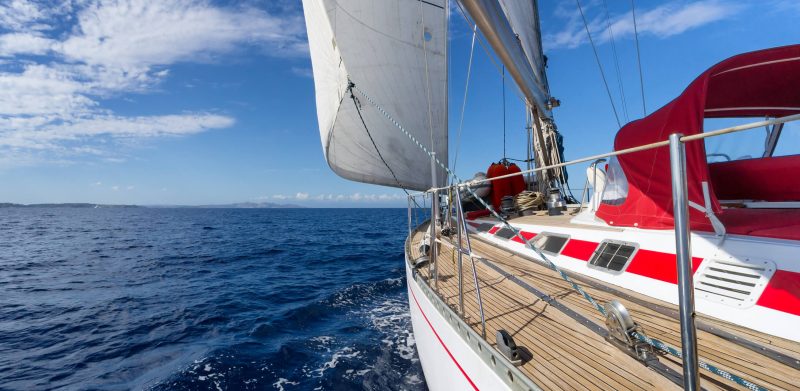
“One, if by land, and two, if by sea”: The import and export of pleasure boats across the Canada-US border
The above quote is from Henry W. Longfellow’s famous poem, Paul Revere’s Ride. It actually has nothing to do with boats, but instead was Revere’s secret signal to warn patriots about the advancing British troops during the American Revolutionary War. Quite the historical watershed moment!
Fast forward to 2016
These days, land and sea are the two most common ways for importing and exporting pleasure boats across the Canada-US border.
- With water thruways from the east coast to the west, it’s a terrific way to view both nations from a different perspective…but don’t forget: a little preparation goes a long way to helping you steer clear of murky waters and hidden obstacles.
There’s no navigating around Customs
Whether you are a Canadian visiting the United States or an American visiting Canada, you must report to Customs upon your arrival.
- Both the Canada Border Services Agency (CBSA) and the US Customs and Border Protection (CBP) have telephone reporting stations at numerous marinas along both sides of the border.
- In some cases you may report by phone prior to arrival, which will speed up the reporting process.
- A visit to the CBSA or CBP websites will show you where you can find these marinas and how to report.
After you have arrived, Customs officials may simply allow you to enter or they could direct you to remain where you are and wait for them to inspect your vessel.
Have all documents ready
The master of the vessel must do the reporting for everyone on board. He or she will need the vessel license and travel documents for the captain and all passengers.
Don’t shoot yourself in the foot!
Regulations are different in Canada versus the US, so first check with Customs officials to find out what you are allowed to bring with you across the border. If in doubt, don’t bring it along or you may be turned away.
For example: Canada has strict firearms regulations, which means you will need a firearms license to enter the country. Many firearms, including handguns, are prohibited and will be refused entry.
Other items that must be declared (if you have them on board) include:
- Agricultural products
- Food products
- Jewellery
- Cash
More ways to ensure smooth sailing
In Canada and the United States, programs such as NEXUS and Trusted Travelers have been set up to facilitate Customs reporting and processing when you cross the border. They may also help reduce the amount of time required to process your vessel entering either country.
- It’s worth signing up for these programs if you frequently travel across the border.
If you purchase a vessel and want to import it either by water or by road, you must declare it to Customs officials and pay any applicable duties or taxes.
- Remember, vessels manufactured in Canada or the US are duty-free under NAFTA.
However, to take advantage of this trade agreement you’ll need to provide the following:
- NAFTA certificate
- Proof of country of manufacture
- Copy of the bill of sale
Bear in mind that in Canada you must pay the GST and the corresponding provincial sales tax. What’s more, all vessels imported into Canada must be licensed.
- You can apply for a vessel license online at the Transport Canada website. There is no fee for a vessel licence in Canada.
- Meanwhile, the US requirements differ from state to state, so you will need to check the applicable licensing requirements.
If travelling by land
If you purchase a trailer to tow your boat by road, be aware that trailers are regulated by Transport Canada.
- As such, they must comply with its regulations to enter Canada or, similarly, with Department of Transportation regulations to enter the United States.
- You will also need to pay any applicable duty or tax on the trailer, depending on the point of purchase.
When the weather turns frigid
Many Canadian and American marinas offer overwintering for your vessels. In most cases, the marina where you moor your vessel will be able to help you with the necessary Customs paperwork.
Don’t let your dreams sink with the ship
Further information is available on the CBSA or CBP websites – or you can always contact your friendly customs broker to help point you in the right direction and keep you out of stormy seas.